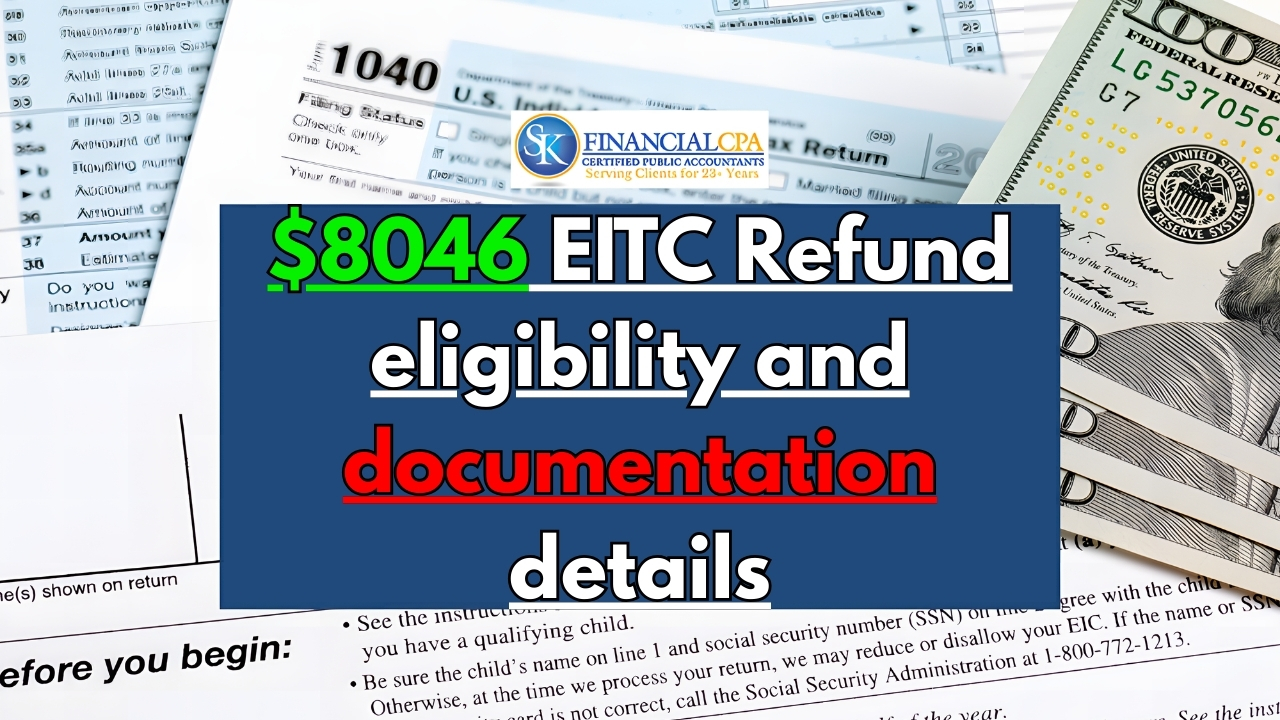EITC Refund : The Earned Income Tax Credit (EITC) is one of the most valuable tax benefits for low- and moderate-income earners, offering refunds that can be as high as $8,046 for the 2025 tax year. Designed to boost the financial well-being of working families, the EITC can significantly increase a taxpayer’s refund or reduce tax owed, providing critical support especially for those with children. Understanding eligibility and documentation requirements is crucial to successfully claim this credit and maximize the refund.
How the EITC Works and Who Qualifies
The EITC is a refundable tax credit that rewards earned income within specific limits. To qualify for the 2025 tax year, taxpayers must have earned income from wages, salaries, or self-employment, and meet income thresholds set by the IRS. For taxpayers with three or more qualifying children, the maximum credit is $8,046. Those with fewer or no children receive correspondingly lower maximum credits ranging from $632 to approximately $6,960.
Eligibility hinges not only on income but also on filing status and family situation. Qualifying children must meet relationship, age, residency, and joint return tests. For example, children must generally be under 19 (or under 24 if full-time students) and live with the taxpayer more than half the year. Taxpayers without qualifying children must be between 25 and 64 years old and meet other criteria. Income limits vary by filing status, with single filers eligible up to about $59,899 in earned income and joint filers up to around $66,819.

Documentation and Claim Process
To claim the EITC, taxpayers must file a federal tax return using Form 1040 or Form 1040-SR and include Schedule EIC if claiming qualifying children. Proper documentation supporting relationship, age, and residency of the children is essential. This may include birth certificates, school records, or medical records. Taxpayers should maintain records proving earned income such as W-2s, Form 1099s, or self-employment income statements.
Filing electronically is recommended to reduce errors and speed up refund processing. Those who have missed claiming EITC in previous years can file amended returns up to three years back to potentially recover refunds for past eligible years. However, accuracy is critical because errors or fraudulent claims can delay refunds or result in penalties.
Key Benefits and Considerations
EITC not only lowers federal income tax but is fully refundable, meaning taxpayers can receive money even if they owe no tax. This credit has proven effective in reducing poverty among working families and supporting children’s well-being. On average, eligible families receive refunds in the thousands, depending on family size and income.
Taxpayers should use resources such as IRS’s EITC Qualification Assistant tool available online to check eligibility. Free tax assistance programs like Volunteer Income Tax Assistance (VITA) also help taxpayers file claims correctly and maximize refunds. Being aware of income rules and maintaining thorough documentation makes the process smoother.
New $7,500 Cost-of-Living Payment Coming Soon – Know Who Qualify ?
EITC Refund Summary
The $8,046 EITC refund for 2025 represents a powerful financial boost for qualifying low- and moderate-income earners, especially families with multiple children. Eligibility depends on earned income, filing status, and family-related criteria. Claiming the credit requires filing federal tax returns with proper documentation, supported by clear evidence of income and family relationships. Taxpayers who meet the criteria should not miss claiming this valuable credit, which can transform their tax returns into significant refunds.
This tax credit remains a cornerstone of tax policy aimed at helping working families meet their financial needs. With careful adherence to IRS guidelines and leveraging available resources, taxpayers can confidently claim EITC and benefit from the substantial refunds available.
